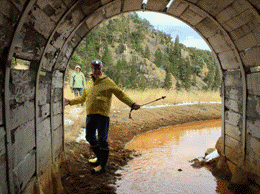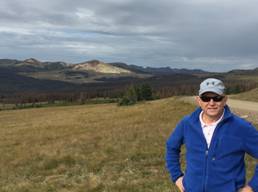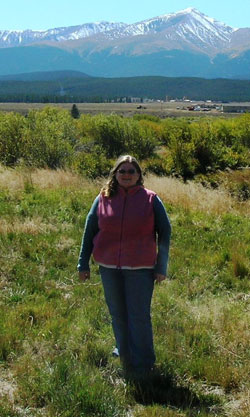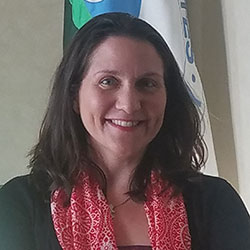Overview, Lessons Learned and Best Practices Derived from Independent Optimization Reviews of Superfund Mining Sites
Sponsored by: U.S. EPA Technology Innovation and Field Services Division
Archived: Wednesday, May 24, 2017
Overview, Lessons Learned and Best Practices Derived from Independent Optimization Reviews of Superfund Mining Sites
2017-05-24
U.S. EPA Technology Innovation and Field Services Division
This webinar presents an overview of the EPA Office of Superfund Remediation and Technology Innovation (OSRTI) "Mine Site Optimization Initiative," and summarizes the lessons learned identified and best practices derived from independent optimization reviews performed on over 30 Superfund mine sites and mining district sites nationwide. The initiative is being performed under the EPA's National Strategy to Expand Superfund Optimization Practices from Site Assessment to Site Completion, which expanded and formalized optimization practices as an operating business model for the Superfund remedial program. The webinar will present case studies of mine site reviews performed, a summary of specific lessons learned identified for site characterization, and an update on the development of best practices resources to support consistent and safe approaches to characterization of mine sites with the potential for sudden, uncontrolled release of mining-influenced waters.
Accessibility, Recording, and Content Disclaimer
Rehabilitation Act Notice for Reasonable Accommodation
It is EPA's policy to make reasonable accommodation to persons with disabilities wishing to participate in the agency's programs and activities, pursuant to the Rehabilitation Act of 1973, 29 U.S.C. 791. Any request for accommodation should be made to Michele Mahoney at 703-603-9057 or mahoney.michele@epa.gov, preferably one week or more in advance of the webinar, so that EPA will have sufficient time to process the request. EPA would welcome specific recommendations from requestors specifying the nature or type of accommodation needed. Please note that CLU-IN provides both alternate phone call-in options and closed captioning for all webinars, and requests for these specific accommodations are not necessary.
Webinar Recording
By participating in this CLU-IN webinar, you automatically agree to authorize recording of audio and visual content presented during this live event and consent to subsequent use of this recording in the public domain by the U.S. Environmental Protection Agency. This recording may include questions, comments and poll responses provided by you during the live event in addition to your name, voice, image or likeness. This recording will be made available after the conclusion of the live event as part of the CLU-IN webinar archives, and will remain available indefinitely. If you do not wish to consent to the recording, please do not join the live event, and contact Jean Balent at 202-566-0832 or balent.jean@epa.gov to discuss your concerns.
Content Disclaimer
This webinar is intended solely to provide information to the public. The views and opinions expressed as part of this webinar do not necessarily state or reflect those of the U.S. Environmental Protection Agency. It is not intended, nor can it be relied upon, to create any rights enforceable by any party in litigation with the United States, or to endorse the use of products or services provided by specific vendors. With respect to this webinar, neither the United States Government nor any of their employees, makes any warranty, express or implied, including the warranties of merchantability and fitness for a particular purpose, or assumes any legal liability or responsibility for the accuracy, completeness, or usefulness of any information, apparatus, product, or process disclosed, or represents that its use would not infringe privately owned rights.
Presenters:
 Kirby Biggs, U.S. EPA(biggs.kirby@epa.gov)
Kirby Biggs, U.S. EPA(biggs.kirby@epa.gov)
Kirby Biggs is the National Optimization Coordinator for EPA OSRTI’s Technology Innovation and Field Services Division (TIFSD). He leads the Superfund National Optimization Strategy Program development and implementation and co-led development of the Strategy. Kirby leads TIFSD’s National Optimization Team of HQ and Regional staff, managing multiple site-specific optimization projects. These projects involve EPA, states, and public sector entities conducting Superfund technical support projects throughout the Superfund Pipeline using targeted investigation technical support, independent design reviews, remedial system evaluations, and long-term monitoring and optimization studies. Kirby also sponsors development of optimization internet seminars and delivers webinars and classroom optimization courses. He identifies and develops new techniques, methods, procedures and practices to facilitate the closeout of sites and to return them to productive use.
 Jody Edwards, Tetra Tech(jody.edwards@tetratech.com)
Jody Edwards, Tetra Tech(jody.edwards@tetratech.com)
Jody Edwards is a Principal Hydrogeologist and Senior Project Manager with Tetra Tech, where he has managed optimization review services support to EPA OSRTI since 2009. A registered Professional Geologist with 31 years' experience in contaminated site characterization and cleanup, Mr. Edwards specializes in leading and performing independent optimization reviews of site cleanups. He is currently leading mining specialist teams in reviewing mine sites and mining district sites to determine the potential for large, uncontrolled releases of mining-influenced water; determining contingency, notifications and emergency action planning (CNEAP) preparedness; identifying planned site activities that warrant performance of failure mode and effects analysis (FMEA); and providing recommendations for preventing or mitigating such releases. Mr. Edwards is also a nationally-recognized expert in the application of innovative best practices such as US EPA's Triad Approach, 3-dimensional visualization and analysis, high-resolution site characterization, and dynamic work strategies using real-time measurement technologies; the use of project life cycle conceptual site models; facilitating stakeholder alignment on program/project goals and objectives; and developing innovative strategies for site characterization, remediation and monitoring.
Moderators:
 Michele Mahoney, U.S. EPA Technology Innovation and Field Services Division (mahoney.michele@epa.gov)
Michele Mahoney, U.S. EPA Technology Innovation and Field Services Division (mahoney.michele@epa.gov)
Michele Mahoney works on contaminated site remediation and reuse within EPA's Superfund program. She provides support to practitioners on the use of soil amendments for remediation and redevelopment/reuse, ecological revitalization, terrestrial carbon sequestration, and urban gardening. She also researches and compiles information on mining site remediation technology and land reuse, and manages content development for the EcoTools and Mining pages on CLU-IN.org. Michele recently led the development of a resource guide on treatment technologies for mining-influenced water.
Michele has worked with EPA for over 14 years. Prior to her current responsibilities, Michele served the Agency as the lead for food waste composting issues and as an environmental fate and ecological risk assessor for pesticide registration.
 Jean Balent, U.S. EPA Technology Innovation and Field Services Division (balent.jean@epa.gov)
Jean Balent, U.S. EPA Technology Innovation and Field Services Division (balent.jean@epa.gov)
Ms Balent is on the staff of the EPA's Technology Innovation and Field
Services Division
where she has worked to collect and disseminate hazardous waste
remediation and
characterization information since 2003. Ms Balent manages the Clean Up
Information
Network website and actively supports online
communication and
collaboration resources available to EPA. She formerly worked with the
US Army Corps
of Engineers Environmental Engineering Division in the Buffalo District.
Ms Balent was
also a member of the SUNY-Buffalo Groundwater Research Group where she
constructed and tested large scale models of groundwater flow. Ms Balent
has also
conducted research relating to the Great Lakes, environmental
remediation, and
brownfields re-development. She holds a Bachelor's degree in
environmental
engineering from SUNY-Buffalo and a Master's degree in Information
Technology from
AIU.
Webinar Slides and References:
- Slide Presentation for Kirby Biggs and Jody Edwards:
Webinar Slides and References:
- Slide Presentation for Kirby Biggs and Jody Edwards:
Additional Resources:
 Environmental Cleanup Best Management Practices: Effective Use of the Project Life Cycle Conceptual Site Model (1.7KB/12pg/PDF)
Environmental Cleanup Best Management Practices: Effective Use of the Project Life Cycle Conceptual Site Model (1.7KB/12pg/PDF) Remediation Optimization: Definition, Scope and Approach (289KB/8pp/PDF)
Remediation Optimization: Definition, Scope and Approach (289KB/8pp/PDF)- Site-specific optimization review reports
- Characterization, Cleanup, and Revitalization of Mining Sites
- Two locations for online resources
Thank you for participating in our webinar. We would like to receive any feedback you might have that would make this service more valuable.
Help & FAQs
Adobe Connect Resources
This seminar will be delivered through Adobe® Connect™ with streaming audio delivered through your computer speakers or headphones. We strongly encourage you to test your computer or mobile app prior to attending this seminar using the links below. Technical support on the day of the seminar will be very limited and subject to significant delays.
Rehabilitation Act Notice for Reasonable Accommodation
It is EPA's policy to make reasonable accommodation to persons with disabilities wishing to participate in the agency's programs and activities, pursuant to the Rehabilitation Act of 1973, 29 U.S.C. 791. Any request for accommodation should be made to Michele Mahoney at 703-603-9057 or mahoney.michele@epa.gov, preferably one week or more in advance of the seminar, so that EPA will have sufficient time to process the request. EPA would welcome specific recommendations from requestors specifying the nature or type of accommodation needed, such as closed captioning.
with any additional questions
If you have a suggested topic or idea for a future CLU-IN internet seminar, please contact:
Technology Integration and Information Branch
PH: 202-566-0832 | Email: balent.jean@epa.gov
Technology Integration and Information Branch
PH: 202-566-0875 | Email: adam.michael@epa.gov





